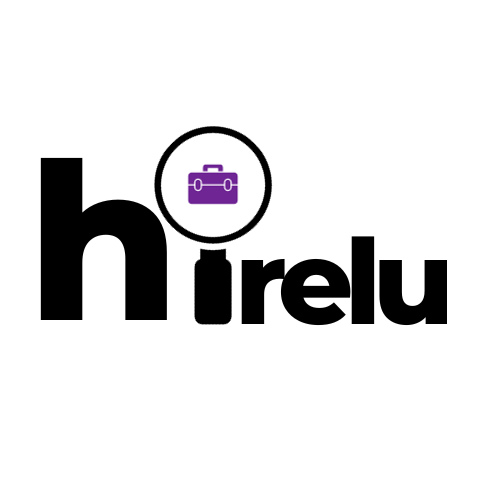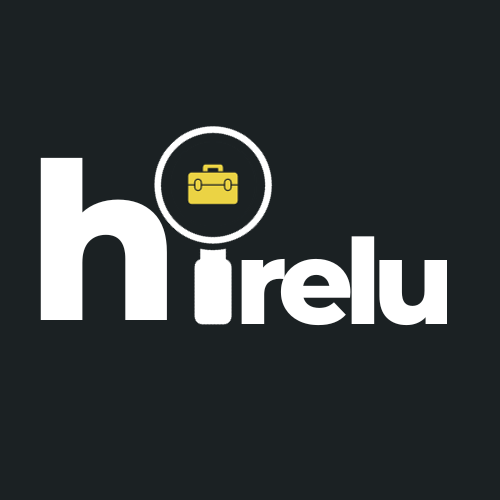In today’s competitive job market, a well-crafted resume can make all the difference in landing your dream job. Your resume serves as your first impression to potential employers, showcasing your skills, experience, and qualifications. It is a crucial tool in the job search process, as it allows employers to quickly assess whether you are a good fit for their organization.
A winning resume has the power to open doors and secure interviews. It highlights your strengths and accomplishments, making you stand out from other candidates. A well-written resume not only increases your chances of getting noticed by employers but also demonstrates your professionalism and attention to detail.
Key Takeaways
- A winning resume is crucial for job seekers to stand out in a competitive job market.
- Resume writing services can be helpful, but it’s important to weigh the pros and cons before choosing one.
- When choosing a resume writing service, consider factors such as experience, credentials, and customer reviews.
- Understanding the basics of resume writing, such as formatting and content, is essential for crafting an effective resume.
- To optimize your resume for ATS, use relevant keywords and avoid common formatting mistakes.
Resume Writing Service: Pros and Cons
While many job seekers choose to write their own resumes, others opt to use a professional resume writing service. There are advantages and disadvantages to both approaches.
One of the main advantages of using a professional resume writing service is that it saves you time and effort. Resume writers are skilled in crafting resumes that are tailored to specific industries and positions. They have a deep understanding of what employers are looking for and can help you highlight your strengths and accomplishments effectively.
Another advantage of using a resume writing service is that it can give you an edge over other candidates. Professional resume writers know how to make your resume stand out from the crowd, using strategies such as keyword optimization and formatting techniques.
However, there are also some disadvantages to using a resume writing service. One of the main drawbacks is the cost. Hiring a professional resume writer can be expensive, especially if you are on a tight budget. Additionally, some job seekers may feel that using a resume writing service takes away from their personal touch and authenticity.
How to Choose the Right Resume Writing Service
If you decide to use a resume writing service, it is important to choose the right one for your needs. Here are some factors to consider when selecting a resume writing service:
1. Reputation and Experience: Look for a resume writing service with a solid reputation and years of experience in the industry. Read reviews and testimonials from past clients to get an idea of their track record.
2. Specialization: Consider whether the resume writing service specializes in your industry or profession. Different industries have different requirements, and it is important to choose a service that understands the specific needs of your field.
3. Customization: Find out if the resume writing service offers personalized resumes or uses generic templates. A customized resume is more likely to showcase your unique skills and qualifications.
4. Communication: Ensure that the resume writing service offers open lines of communication and is willing to collaborate with you throughout the process. It is important to have a clear understanding of your goals and objectives.
Before hiring a resume writer, ask them the following questions:
– Can you provide examples of resumes you have written for clients in my industry?
– What is your process for gathering information about my skills and experience?
– How long does it typically take to complete a resume?
– What is your policy on revisions?
– What are your fees and payment terms?
Resume Writing: Understanding the Basics
| Topic | Description |
|---|---|
| Objective Statement | A brief statement that highlights your career goals and what you can bring to the table. |
| Work Experience | A list of your previous jobs, including job titles, dates of employment, and key responsibilities. |
| Education | A list of your educational achievements, including degrees, certifications, and relevant coursework. |
| Skills | A list of your relevant skills, including technical and soft skills. |
| Achievements | A list of your notable achievements, including awards, publications, and successful projects. |
| References | A list of professional references who can vouch for your skills and work ethic. |
Before diving into the process of writing a resume, it is important to understand its purpose, different types, and essential components.
The purpose of a resume is to provide a concise summary of your skills, experience, and qualifications. It should highlight your most relevant achievements and demonstrate why you are a strong candidate for the position.
There are several types of resumes, including chronological, functional, combination, and targeted resumes. The most common type is the chronological resume, which lists your work experience in reverse chronological order. The functional resume focuses on your skills and abilities rather than your work history. The combination resume combines elements of both the chronological and functional resumes. The targeted resume is tailored to a specific job or industry.
Regardless of the type of resume you choose, there are essential components that should be included. These include a header with your contact information, a summary statement or objective, a list of work experience, education, skills, and any additional sections such as certifications or volunteer work.
How to Write a Resume: Step-by-Step Guide
Now that you understand the basics of resume writing, let’s dive into the step-by-step process of creating a winning resume.
1. Preparing to write a resume: Before you start writing your resume, gather all the necessary information, including your contact details, work history, education, and any relevant skills or certifications. Research the job requirements and tailor your resume accordingly.
2. Writing the header and summary statement: The header should include your name, phone number, email address, and LinkedIn profile (if applicable). The summary statement is a brief overview of your skills and experience. It should highlight your most relevant qualifications and grab the attention of the reader.
3. Listing work experience and education: In the work experience section, list your previous jobs in reverse chronological order. Include the company name, job title, dates of employment, and a brief description of your responsibilities and achievements. In the education section, list your degrees or certifications along with the name of the institution and dates attended.
4. Including skills and achievements: In this section, highlight your key skills that are relevant to the job you are applying for. Use bullet points to make them easy to read. Additionally, include any notable achievements or accomplishments that demonstrate your abilities and strengths.
5. Adding references and other sections: It is not necessary to include references on your resume unless specifically requested by the employer. Instead, you can mention that references are available upon request. You can also include additional sections such as certifications, professional affiliations, volunteer work, or language skills if they are relevant to the position.
Resume Writing Tips: Dos and Don’ts

To ensure that your resume stands out from the competition, here are some dos and don’ts to keep in mind:
Dos:
– Tailor your resume to the job: Customize your resume for each position you apply for. Highlight the skills and experience that are most relevant to the job requirements.
– Use action verbs: Start each bullet point with a strong action verb to make your accomplishments more impactful. For example, instead of saying “Responsible for managing a team,” say “Managed a team of 10 employees.”
– Proofread: Double-check your resume for any spelling or grammatical errors. A well-written and error-free resume demonstrates attention to detail and professionalism.
Don’ts:
– Including irrelevant information: Only include information that is relevant to the job you are applying for. Avoid including personal details such as age, marital status, or hobbies unless they are directly related to the position.
– Lying: Never lie or exaggerate on your resume. Employers can easily verify the information you provide, and dishonesty can have serious consequences.
– Using a generic template: While templates can be helpful as a starting point, avoid using generic templates that make your resume look like everyone else’s. Customize the design and layout to reflect your personal brand.
Crafting a Winning Resume: Skills and Achievements
One of the key elements of a winning resume is showcasing your skills and achievements effectively. Here are some tips on how to do this:
1. Identifying and highlighting relevant skills: Review the job description and identify the key skills required for the position. Make sure to include these skills in your resume, using specific examples to demonstrate how you have used them in previous roles.
2. Showcasing achievements and accomplishments: Instead of simply listing your job responsibilities, focus on your achievements and accomplishments. Use bullet points to highlight specific projects or initiatives you have successfully completed.
3. Using metrics and numbers to quantify achievements: Whenever possible, use metrics and numbers to quantify your achievements. For example, instead of saying “Increased sales,” say “Increased sales by 20% within six months.”
By showcasing your skills and achievements, you demonstrate your value to potential employers and increase your chances of getting noticed.
The Power of Keywords: Optimizing Your Resume for ATS
In today’s digital age, many companies use applicant tracking systems (ATS) to screen resumes before they are reviewed by human recruiters. These systems scan resumes for specific keywords and phrases that match the job requirements.
To optimize your resume for ATS, follow these tips:
1. Understand applicant tracking systems (ATS): Research how ATS works and what they are looking for. This will help you tailor your resume accordingly.
2. Use relevant keywords and phrases: Review the job description and identify the keywords and phrases that are most relevant to the position. Incorporate these keywords naturally throughout your resume.
3. Avoid common mistakes that can hurt your chances: Some common mistakes that can negatively impact your resume’s performance in ATS include using images or graphics, using unusual fonts or formatting, and not including a text version of your resume.
By optimizing your resume for ATS, you increase the chances of getting past the initial screening process and being considered for the position.
Formatting Your Resume: Best Practices and Common Mistakes
The formatting of your resume is just as important as its content. Here are some best practices to follow and common mistakes to avoid:
1. Choosing the right format and layout: Select a format that best suits your skills and experience. The most common formats are chronological, functional, combination, and targeted resumes. Choose a layout that is clean, organized, and easy to read.
2. Using appropriate fonts and colors: Stick to professional fonts such as Arial, Calibri, or Times New Roman. Avoid using fancy or decorative fonts that can be difficult to read. Use black or dark gray text on a white or light-colored background for optimal readability.
3. Avoiding common formatting mistakes: Some common formatting mistakes to avoid include using excessive formatting such as bold or italics, using inconsistent spacing or alignment, and including too much information in one section.
By following these formatting best practices and avoiding common mistakes, you can ensure that your resume is visually appealing and easy to read.
Taking Your Resume to the Next Level
In conclusion, a winning resume is a powerful tool in your job search arsenal. It can open doors, secure interviews, and ultimately help you land your dream job. By understanding the importance of a well-written resume, considering the pros and cons of using a resume writing service, and following the step-by-step guide to writing a resume, you can create a compelling document that showcases your skills and qualifications.
Remember to tailor your resume to each job application, highlight your relevant skills and achievements, optimize it for ATS, and follow best practices for formatting. By taking these steps, you can take your resume to the next level and increase your chances of success in the job market. So take action today and start crafting a winning resume that will set you apart from the competition.
If you’re looking to enhance your resume writing skills, you might find it helpful to check out Hirelu’s team of experts. Their article on “Meet the Team” provides valuable insights into the individuals behind the scenes who can guide you in creating a standout resume. Additionally, Hirelu offers a comprehensive resume sample that can serve as a useful reference point for structuring and formatting your own document. For more information on how your personal data is handled when using Hirelu’s services, you can review their privacy policy.





